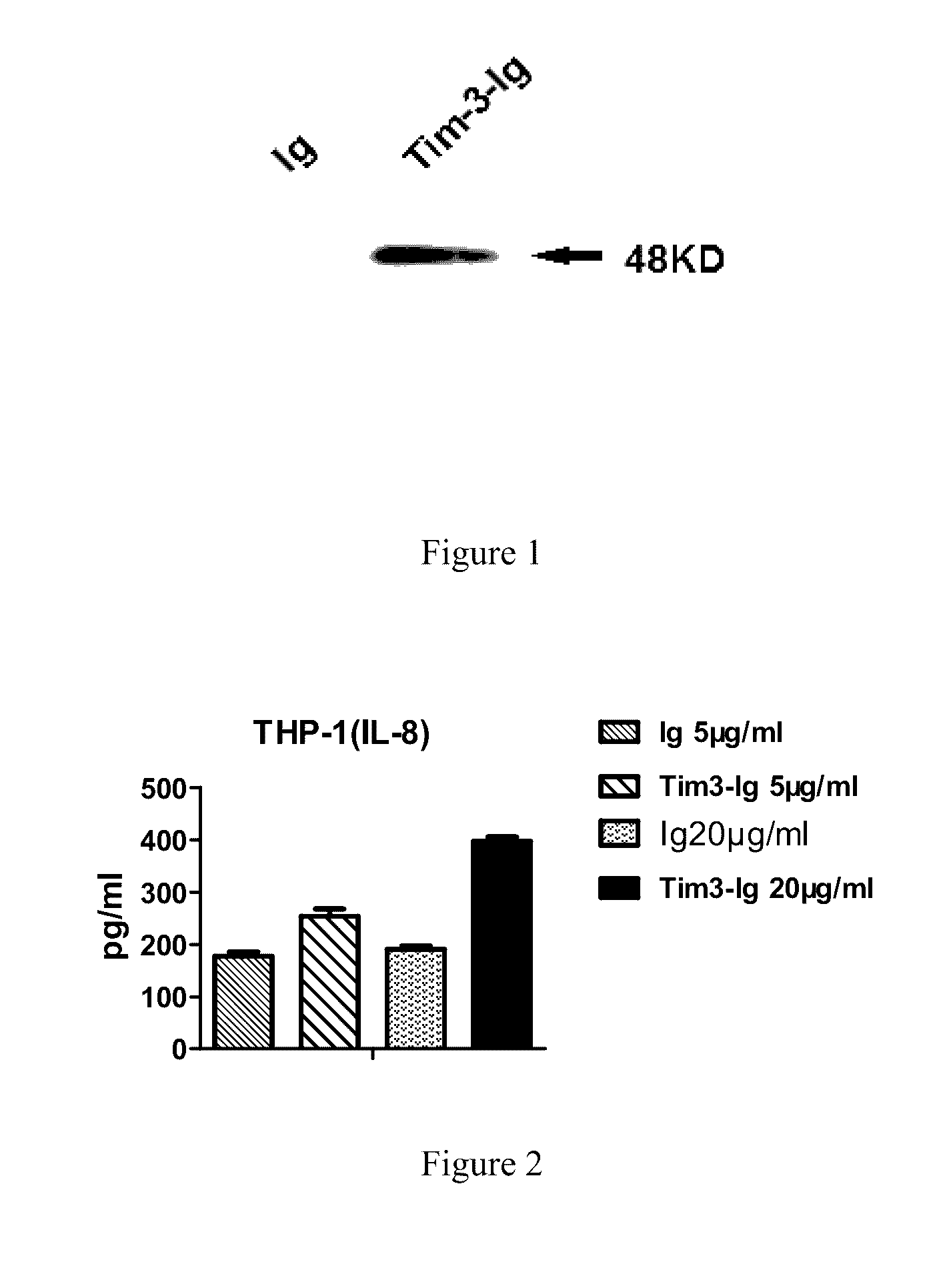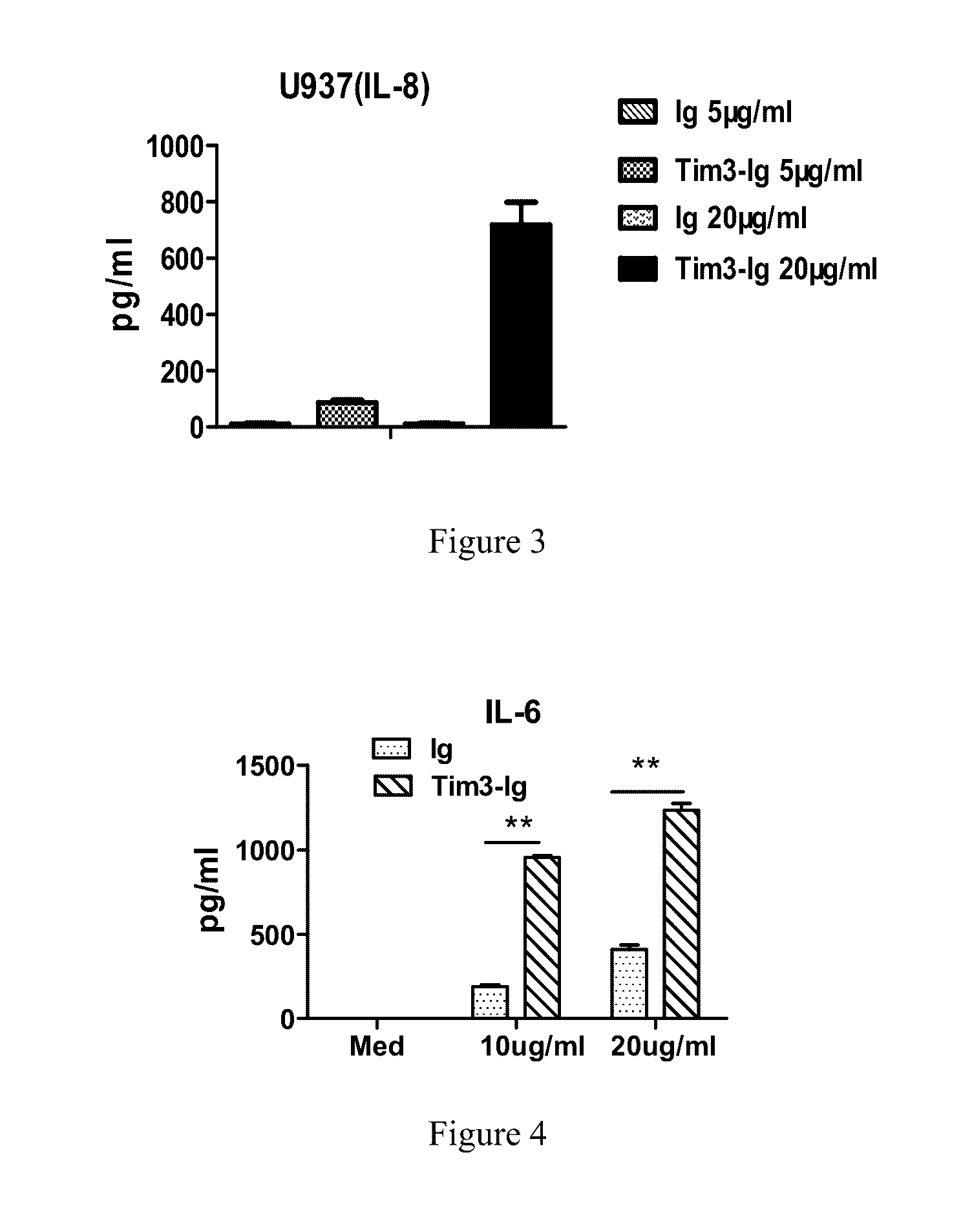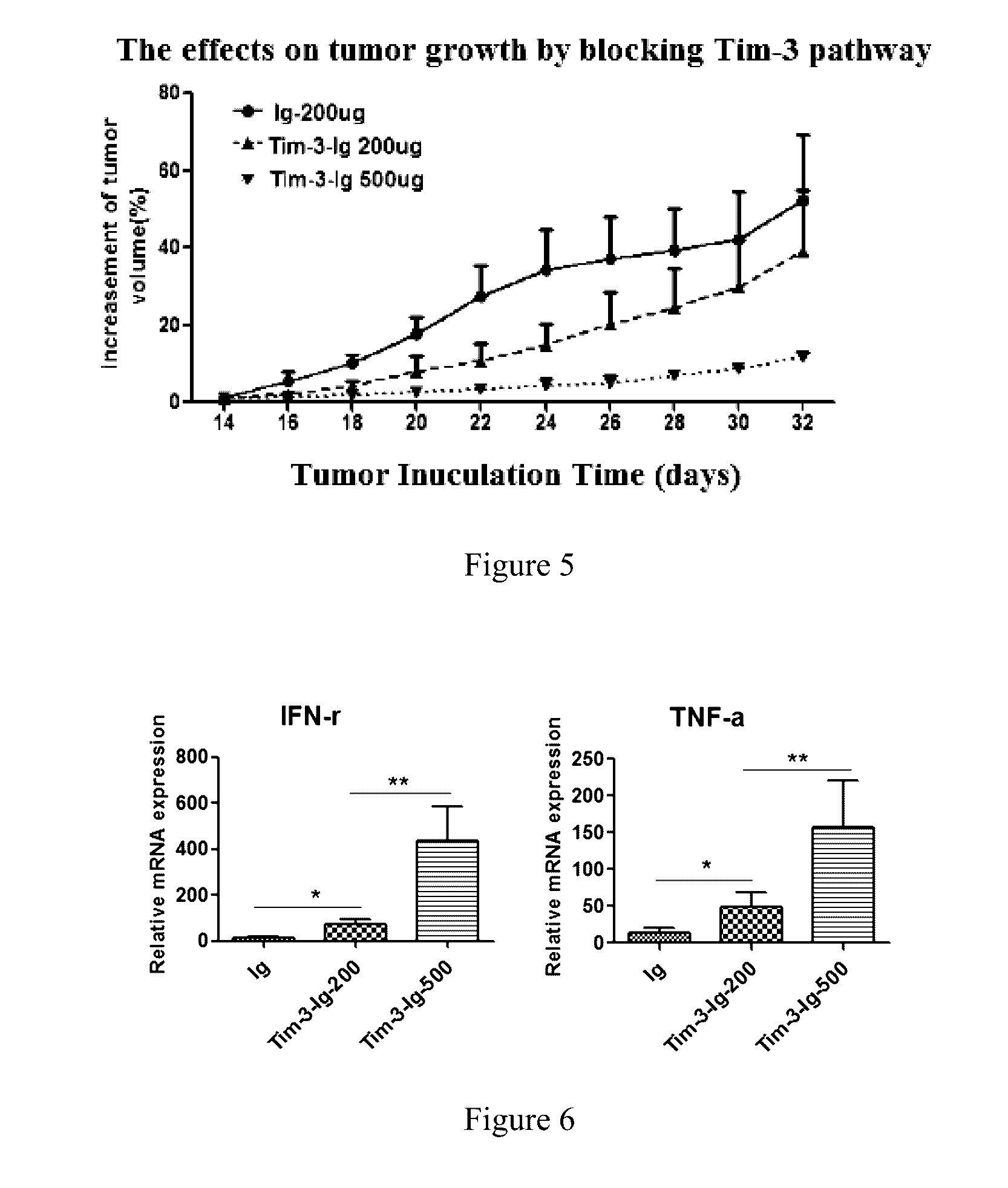Human tim-3 fusion protein capable of blocking tim-3 signaling pathway
a fusion protein and signaling pathway technology, applied in the field of fusion proteins, can solve problems such as no blocking agent, and achieve the effect of good blocking effect on the tim-3 signal pathway
- Summary
- Abstract
- Description
- Claims
- Application Information
AI Technical Summary
Benefits of technology
Problems solved by technology
Method used
Image
Examples
example 1
ion of an expression vector containing the fusion protein
[0040]Experiment Materials: T4 DNA ligase; vector pcDNA3.1; competent bacteria JM109; plasmid extraction reagents; PCR reagents.
[0041]Methods and Results: Based on the sequences of human Tim-3 gene fragment and human IgG1 gene fragment disclosed in Genebank, human Tim-3-Ig gene containing a proper linking sequence was prepared via artificial synthesis. The human Tim-3-Ig gene was mixed with a vector by a proper ratio in T4 DNA ligase buffer, 0.5 U of T4 DNA ligase was added, and ligation was performed at 16° C. overnight. 104, of the ligation liquid was taken, added into 200 μL of competent bacteria JM109 and mixed gently. The mixture was subjected to ice bath for 30 min and 42° C. water bath for heat shock for 90 seconds, and then rapidly moved into ice bath for 2 min. 800 μL of LB medium was added to the mixture, and it was placed on a 37° C. constant temperature shaker with a shaking rate of 150 r / min for 45 min. After 4000...
example 2
ssion of Fusion Protein and Western Blot Assay
[0042]1. Experiment Materials:
[0043]Protein lysate; SDS-PAGE reagents; Tim-3 antibody (Abcam Company); NC film; Chinese hamster ovary cell (CHO cell); Protein A Sepharose CL 4B column (Beijing Vector Gene Technology co. Ltd.); 20% fetal bovine serum (Beijing YuanHeng ShengMa Biology Technology Research Institute); serum-free RPMI 1640 (Gibco Company).
[0044]2. Methods and Results:
[0045]1) The expression of the fusion protein: the recombinant plasmid pcDNA3.1-Tim-3-Ig prepared in the Example was transfected into CHO cells, which were cultured for several days, and then the supernatant was collected. 1 mL of 0.1 mol / L phosphate buffer (pH 8.0) was added to the supernatant, and the pH was adjusted to 9.0 with 1 mol / L TRIS-HCL. The cell supernatant was loaded into a Protein A Sepharose CL 4B protein column (well equilibrated with pH 8.0, 0.1 mol / L phosphate buffer), and the column was washed with the above buffer until no contaminant protein ...
example 3
ay for the Binding Activity of the Fusion Protein
[0048]Experiment controls: negative control (merely containing the Ig of the invention), Control 1 (referred to as D1 protein with the sequence of SEQ ID NO.3), Control 2 (referred to as D2 protein with the sequence of SEQ ID NO.4), Control 3 (referred to as D3 protein with the sequence of SEQ ID NO.5), and Control 4 (referred to as D4 protein with the sequence of SEQ ID NO.6).
[0049]Methods and Results: after the fusion protein was prepared, binding trials were used in the invention to measure the binding activity between the Tim-3-Ig fusion protein and Gal-9. Negative control, Control 1, Control 2, Control 3, and Control 4 were also used. Specific procedures were as follows:
[0050]1) Gal-9 protein coating: Gal-9 protein with the concentration of 1-10m / ml in buffer was used to coat the wells of a PVC microtiter plate, and an adhesive plastic sheet was used to cover the microtiter plate. The plate was incubated at 4° C. overnight. The c...
PUM
| Property | Measurement | Unit |
|---|---|---|
| concentration | aaaaa | aaaaa |
| temperature | aaaaa | aaaaa |
| temperature | aaaaa | aaaaa |
Abstract
Description
Claims
Application Information
 Login to View More
Login to View More - R&D
- Intellectual Property
- Life Sciences
- Materials
- Tech Scout
- Unparalleled Data Quality
- Higher Quality Content
- 60% Fewer Hallucinations
Browse by: Latest US Patents, China's latest patents, Technical Efficacy Thesaurus, Application Domain, Technology Topic, Popular Technical Reports.
© 2025 PatSnap. All rights reserved.Legal|Privacy policy|Modern Slavery Act Transparency Statement|Sitemap|About US| Contact US: help@patsnap.com



